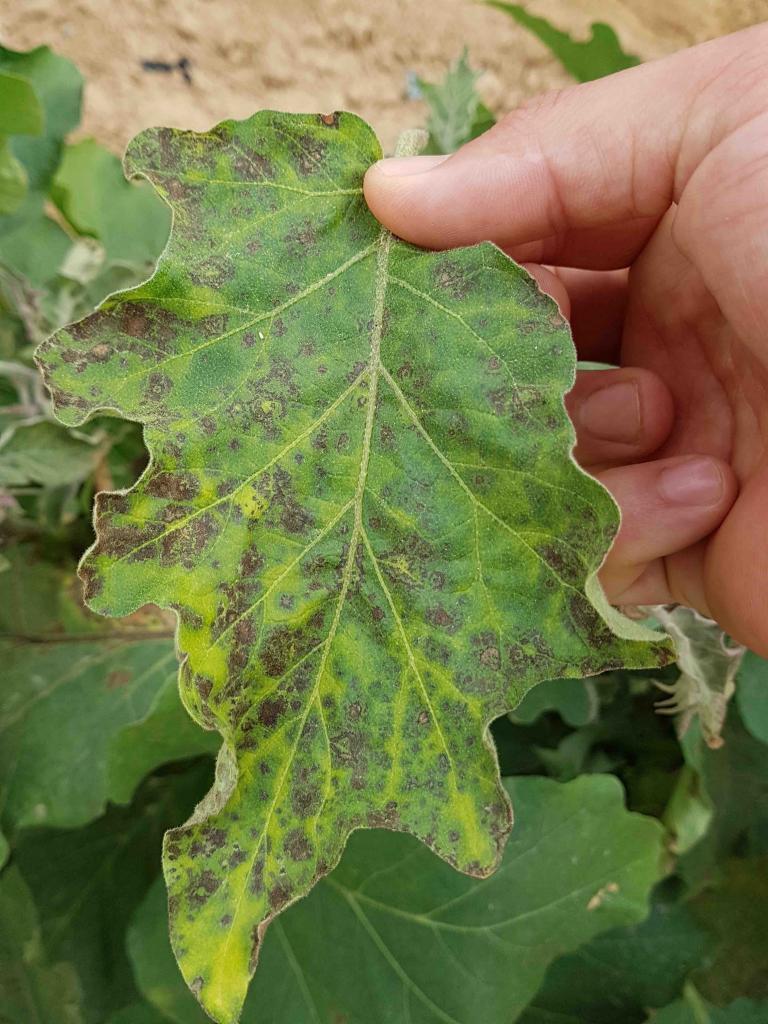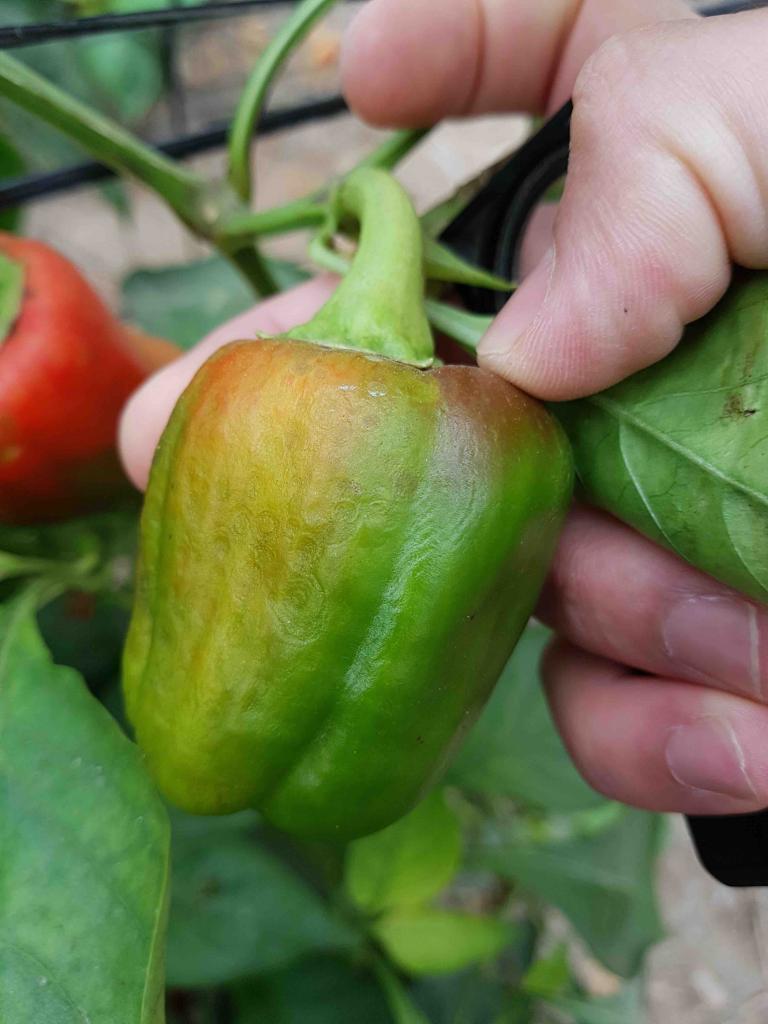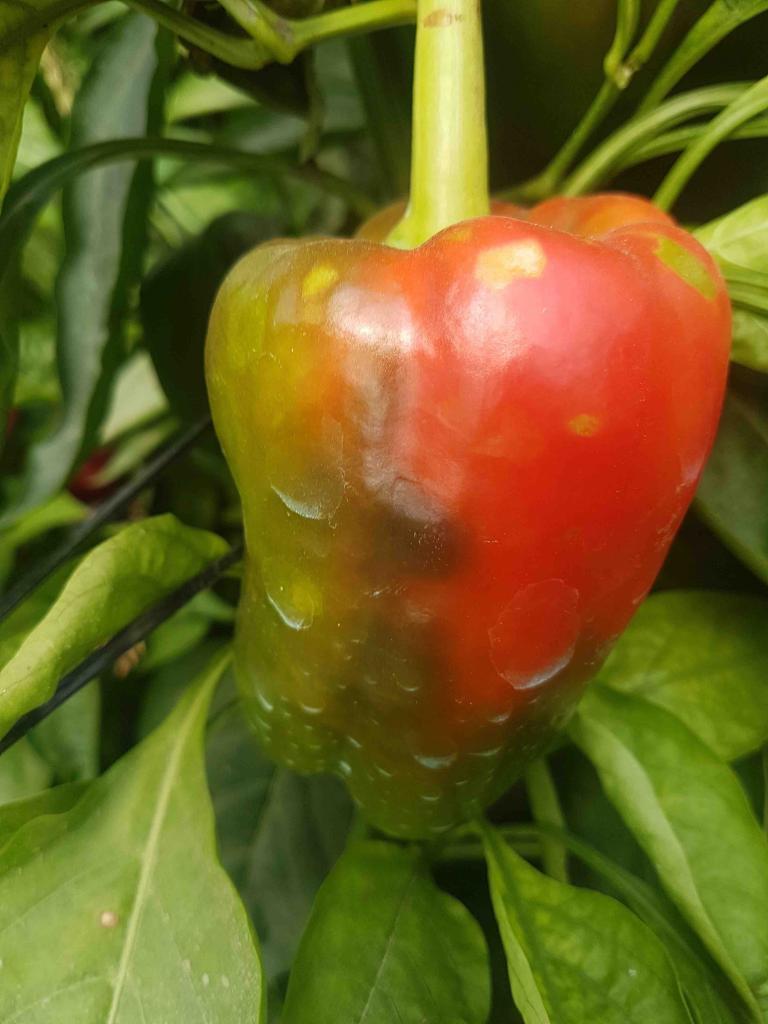Virus de la flétrissure de la tomate
Tobacco, peanut, tomato, pepper, potato, eggplant, lettuce, endive, celery, bean, cowpea, spinach, cucumber, cauliflower, and many more
Tomato spotted wilt virus (TSWV) is from the tospoviruses genus and is common worldwide due to the spread of its main vector, the western flower thrips. The infection results in spotting and wilting of the infected crop, reduced yield, and in a later stage it will lead to death of the plant. Early symptoms show on the stems and leaves, while symptoms upon fruits appear at a later stage. Foliage and stems: appearance of circular stains of about 5.0 cm in diameter and quickly become necrosis. Fruits: round halo-like and sometimes spiral spots. When plant is fully infected then the leaves have all over chlorosis with formations of necrotic spots and delayed development.
The virus is transmitted by thrips (mainly the western flowers thrips), and it is not seedborne. There are a large number of hosts, such as weeds, that allow the virus to remain present even after the contaminated crop was harvested. This can cause the weeds to contaminate crops the following season and makes disease control difficult.
Il n’y a pas de traitement contre les virus. Les plantes infectées ne peuvent être guéries; par conséquent, l’accent devrait être mis sur la prévention des épidémies de virus. Si seules quelques plantes sont infectées, elles doivent être retirées du champ.
Utilisez des variétés de plantes et des semences résistantes à la maladie.
Grandir à l’intérieur des structures : Gardez la structure fermée et les filets exempts de trous.
Assainissement: Gardez l’environnement proche des cultures en éliminant les mauvaises herbes, les débris de plantes, les parties endommagées, la croissance indésirable des plantes et les plantes à proximité qui ne sont ni cultivées ni protégées.
Utiliser des techniques de surveillance des ravageurs (tels que des pièges) pour suivre les populations d’insectes.
Il est difficile de gérer efficacement les thrips avec des insecticides. Essayez d’éviter d’utiliser des insecticides organophosphorés, carbamates et pyréthroïdes. Ces produits chimiques vont éliminer les ennemis naturels et les pollinisateurs et laisser indemnes la majorité des populations de thrips.
spinosad- produits à base.
Les ennemis du thrips naturels disponibles dans le commerce appartiennent au genre orius (« minuscule bogue de pirate »).
*Names marked in red are considered to be highly poisonous to beneficial insects.
*Names marked in green are considered to be organic and IPM (integrated pest management) compatible.
Image Gallery


